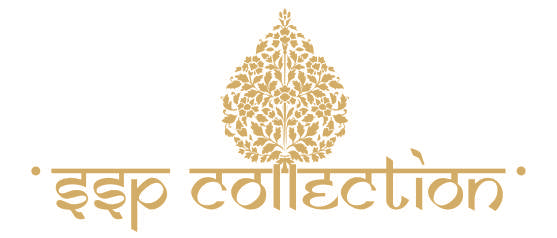Banarasi fabrics are renowned for their opulence, intricate weaving techniques, and timeless elegance. Originating from the city of Varanasi (formerly known as Banaras) in India, these fabrics have a rich cultural and historical significance. Each Banarasi fabric is a testament to the skilled craftsmanship and artistic heritage of the weavers who meticulously create them.
1. Katan Silk:
- Material: Pure silk threads are used in the warp and weft, resulting in a luxurious and smooth texture.- Characteristics: Known for its fine weave, Katan Silk is often adorned with intricate patterns and traditional motifs.
- Uses: Wedding sarees, lehengas, and other formal attire.
2. Moonga Silk:
- Material: Moonga silk, also known as Muga silk, is produced from the silk of Assam's endemic silkworms.- Characteristics: This silk has a natural golden hue and a rich, glossy texture.
- Uses: Moonga silk is commonly used in weaving sarees and traditional Assamese garments.
3. Chiniya Silk:
- Material: Combining silk with zari (metallic thread) to create a stunning and lustrous effect.- Characteristics: Chiniya Silk is known for its subtle sheen and intricate zari work.
- Uses: Popularly used in crafting bridal wear, festive sarees, and dress materials.
4. Tissue Silk:
- Material: A lightweight variant woven with a combination of silk and zari threads.- Characteristics: Tissue Silk has a translucent appearance and a delicate texture, making it ideal for draping.
- Uses: Sarees, dupattas, and ethnic wear for special occasions.
5. Cotton Silk:
- Material: A blend of silk and cotton fibers, offering the comfort of cotton with the sheen of silk.- Characteristics: Soft and breathable, Cotton Silk is versatile and suitable for various occasions.
- Uses: Casual and semi-formal wear, as well as sarees and salwar suits.
6. Dupion Silk:
- Material: Dupion silk is created from irregular silk fibers, resulting in a textured and slubbed appearance.- Characteristics: Known for its crisp texture and subtle shine, Dupion Silk adds a touch of sophistication.
- Uses: Wedding attire, formal dresses, and home furnishings.
7. Tussar Silk:
- Material: Tussar silk, also known as "wild silk," is derived from the larvae of certain caterpillars.- Characteristics: Tussar Silk has a natural dull gold sheen and a slightly coarse texture.
- Uses: Ethnic wear, sarees, and accessories for a rustic yet elegant look.

